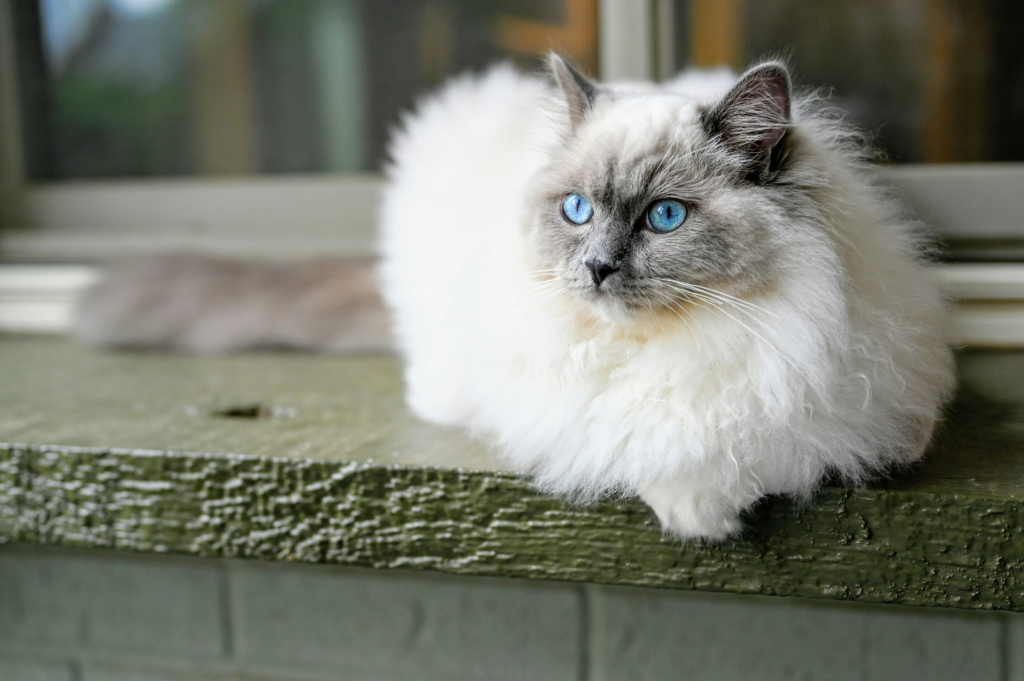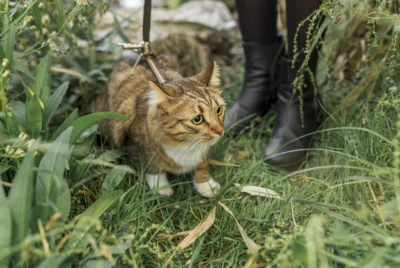Are Ragdoll Cats Hypoallergenic? The Truth for Cat Lovers
Do you dream of cuddling a fluffy Ragdoll cat but worry about allergies? You might be curious if Ragdolls are truly hypoallergenic. While no cat is completely allergy-free, some breeds, like Ragdolls, might be a better choice for people with allergies due to certain characteristics. While ragdoll cats are not considered hypoallergenic cats, they are less likely to trigger allergic reactions. This cat breed of our furry companion does not have an undercoat. However, it does not necessarily remove them as cat allergens and absolutely consider ragdoll cats hypoallergenic.
Why Do People Sneeze Around Cats?
Many people have allergies to cats, but what makes them sneeze and sniffle? People would initially think that the cat’s furs trigger allergies. But the real culprit is a tiny protein called Fel d 1. This protein found in cat’s saliva is like dust mites for cats and lives in their spit, dead skin flakes (otherwise known as cat dander), and pee. When these tiny bits get in the air and someone with allergies breathes them in, their body thinks they’re harmful and tries to fight them off. This fight is what makes people sneeze, and have itchy eyes, and runny noses.
Are Ragdolls Friend or Foe to Allergies?
While no cats are truly allergy-free, Ragdolls might be a better choice for some people with allergies than other breeds. Here’s why:
One Furry Coat: Unlike some cats with two thick coats, Ragdolls only have one layer of fur. This means less shedding and potentially fewer allergens floating around to bother you.
Less Shedding: Ragdolls are known for shedding less fur than many other breeds, further reducing your chances of breathing in allergens.
Calm and Gentle: These relaxed cats tend to groom themselves less than some other breeds, which might help keep allergens on their fur from spreading.
It’s important to remember that everyone’s allergies are different. Some people might be very sensitive to allergens, even with Ragdolls. Others might have mild symptoms or none at all.

Keeping Your Home Sneeze-Free with Ragdolls
Even with cute ragdoll kittens, managing cat allergies is important. Here are some simple tips:
Brush Often: Brushing your Ragdoll regularly removes loose fur and dead skin, reducing the amount of allergens in your home.
Air Cleaners: Think about using air purifiers. These work like tiny magnets, trapping allergens floating in the air, including those from cats.
Clean the Litter Box Daily: Scooping the litter box every day and using a covered box helps keep dust and allergens from spreading.
Wash Your Hands: After playing with your cat, wash your hands well to avoid transferring allergens from cat saliva or fur to your face and triggering allergies.
Neuter Your Pet : Neutered male ragdolls decreases the likelihood of spraying urine – a very dangerous cat allergen.
Remember, these tips can help, but they don’t guarantee you won’t sneeze at all. If you have severe allergies, talk to a doctor about further options.

Other Cat Breeds for Allergy Sufferers
While Ragdolls might be a good option for some, other breeds might be even better suited for people with allergies. Here are a few examples:
Siamese: These sleek cats have short, single coats and might produce fewer allergens.
Balinese: Similar to Siamese, Balinese also have single coats and might be a good choice for allergy sufferers.
Sphynx: This hairless breed might be the ultimate choice for some allergy sufferers, though their unique appearance isn’t for everyone.
Burmese: They have a short hair length; and shedding is unusual, unless there is an underlying health condition.
Also read: Black and White Maine Coon Cat
Remember, It’s Not Just About Breed
While cat breeds can play a role in how many allergens cats produce, it’s important to remember that individual cats within the same breed can vary. Additionally, your overall allergy severity and the cat’s grooming habits can significantly impact your experience. Cat food also greatly contributes to the increase or decrease of allergens in cat hair and dander.

Before Bringing Home a Cat: Responsible Pet Ownership
Bringing a cat home is exciting, but it’s important to think things through before you jump in. Here are some steps to take to ensure you’re ready:
Talk to your doctor: Tell them about your allergies and ask if owning a cat, even a Ragdoll, is a good idea for you. They can give you advice based on your health. Even hypoallergenic cat can trigger allergic reactions on hypersensitive people. Even minimal exposure to cat hair may produce symptoms of pet allergies.
Consider fostering: If you’re unsure if you’re ready to adopt a cat, think about fostering a Ragdoll from a local shelter. This lets you experience what it’s like to live with a Ragdoll and see how your allergies react in a familiar environment.
Prepare your home: Get things like air purifiers to help keep the air clean, replace fabric furniture with easier-to-clean options, and wash your bedding and curtains often.
Be realistic: Even with Ragdoll cat breed and allergy management, you might still have some allergy symptoms. Be prepared to take your allergy medication and clean regularly.
By following these steps and doing your research, you increase your chances of finding the purrfect feline friend even if you have allergies. Remember, responsible pet ownership means putting the well-being of both you and the animal first. This means making informed decisions based on your unique situation.
Living with Furry Friends and Allergies
Having a cuddly cat can be a dream come true, even if you have allergies. But it’s important to approach it carefully and responsibly. While Ragdolls, being domesticated cats, might be a better option for some due to their characteristics, the final decision depends on your own allergies and overall situation.
Talk to your doctor, research different breeds, prepare your home, and keep the well-being of both yourself and the animal in mind. By following these steps, you can navigate the world of cat allergies and potentially find a furry friend who brings joy to your life without causing too much discomfort.




